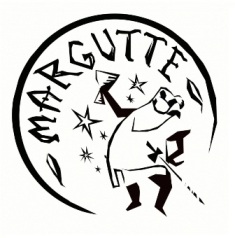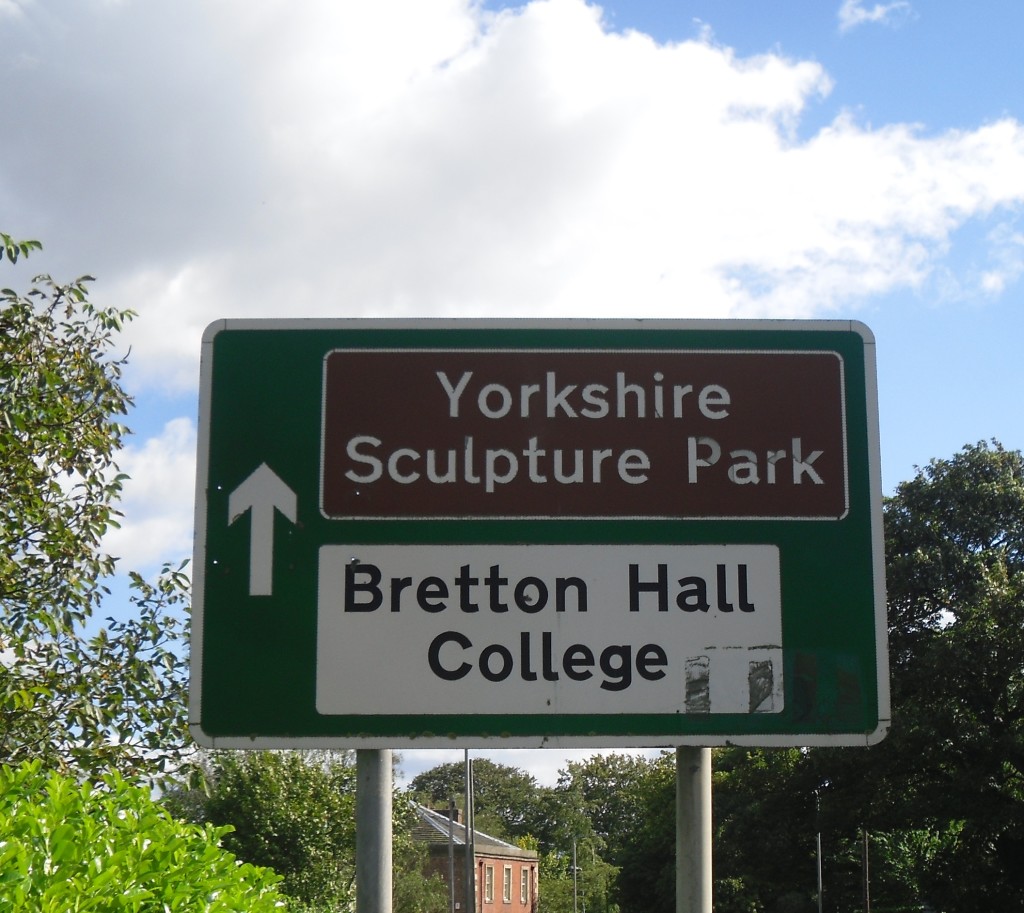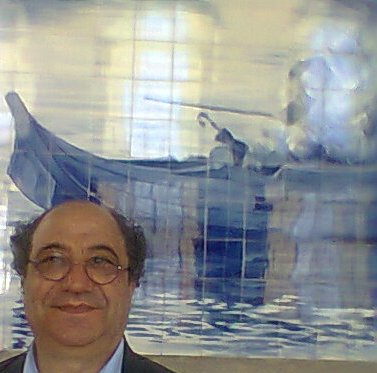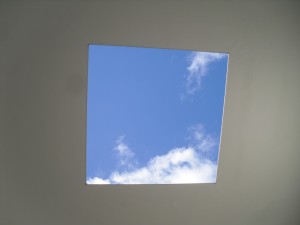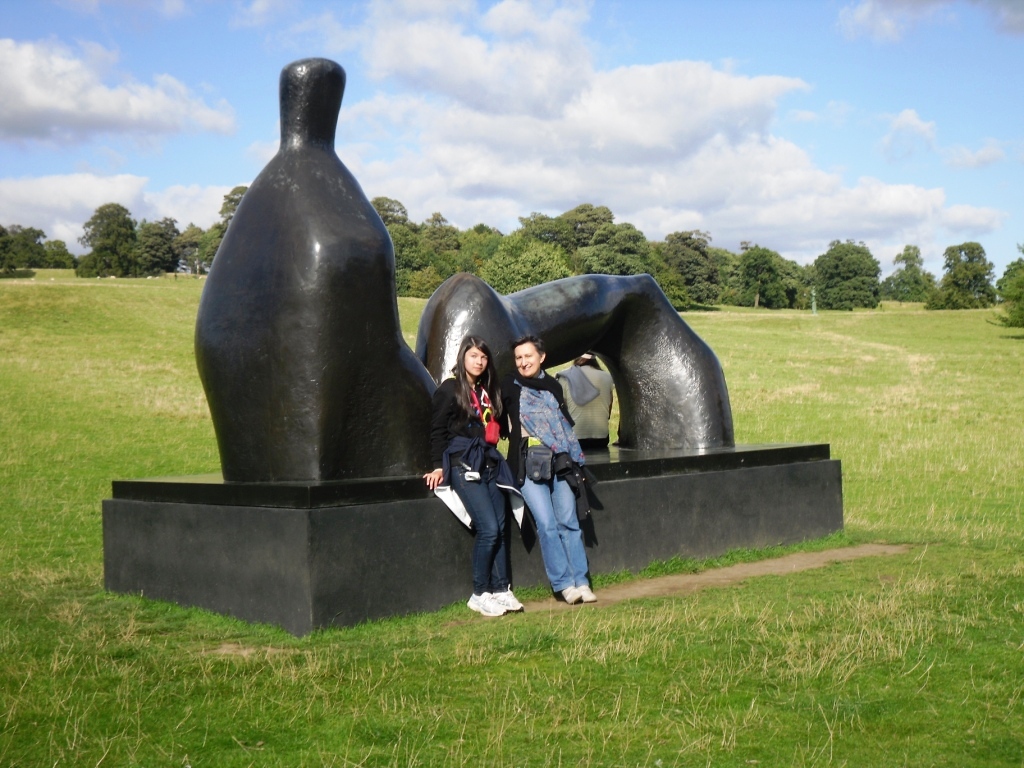ANGIE DE COURCY BOWER
Yorkshire Sculpture Park (YSP) was started in 1977 by Peter Murray, who was at that time running the post graduate course for art teachers at Bretton Hall, a former college of the arts in the centre of the Bretton Estate. Since then, YSP has been in receipt of many prestigious awards: in 2010, Peter was awarded a CBE in recognition of his efforts and this year, YSP is the Art Fund’s Museum of the Year, having beaten such luminaries as Tate Britain and the Sainsbury Centre to win the prize. The journey has been epic: a story of vision, tenacity and challenge – and astounding success.
Unusually, YSP is an independent charitable trust which needs to find the majority of its funding from sources beyond public funding. Currently, the public funding is provided mainly by The Arts Council of England with a small amount coming from Wakefield Council. However, YSP needs to find around 70% of its required income so support from individuals and trusts and foundations is essential in funding the ambitious exhibition and learning programmes.
We have taken a very creative approach to income generation and, apart from sponsorship and grants, there is a restaurant and two cafes on site as well as an award-winning shop. The beautiful Visitor Centre is also a wonderful venue for corporate events, weddings and other important celebrations. Another very unusual feature of life here is that whilst most landscapes and gardens close for winter the YSP remains open throughout the seasons and whilst most galleries close one day a week we are open daily (except for Christmas). The financial demands for this commitment are huge so funding has to be sought constantly.
The glorious landscape was designed in the eighteenth and nineteenth centuries to shield the occupants of the mansion at its midst from the eyes of neighbours and any trappings of ordinary working life. Initially, the land was not open to the public but beginning with access to about 90 acres YSP now makes approximately 500 acres available for visitors to enjoy. Varying from the enclosed and formal to the open grazing land of the Country Park, with two large lakes and amazing vistas, the landscape itself only became available to the public by becoming a “gallery without walls” in 1977. These days we also have galleries with walls, in fact five of them: the Underground, Bothy, Garden and Longside galleries and the recently restored estate Chapel.
We used the word “gallery” to describe YSP even before we had any indoor spaces because we wanted to convey the vibrant and multi-layered scope of our work (the word “museum” seemed to convey a less fluid agenda). Bringing our experience as artists and educators to the development of YSP we aspired to creating a space which would make art and landscape part of people’s everyday life.
Predicated on the notion that the arts should be accessible, free admission has been a crucial part of that process. YSP was determined to bring good examples of contemporary practice to the widest possible audience. In terms of the public, the idea was to “demystify” sculpture and provide a space in which it could be enjoyed in a relaxed and informative context: one which allowed people to engage with the Park in whatever way they chose; from simply enjoying a walk in stimulating surroundings to being able to study sculpture, or the project, at an academically advanced level assisted by our resources and knowledge. YSP also pioneered the public being able to touch the work in the open air – to delicately explore the surfaces of sculpture and further understand the materials and making processes. When you can touch an object you are in a different psychological space to it as it has been brought into your “felt” world in a very direct way.
This has helped make even the most challenging approaches to sculpture become more intellectually and emotionally accessible. This ease of access, together with the pieces being moved, has meant that even those initially resistant to the notion of putting sculpture in landscape became intrigued by the way it could be viewed against the elements and how the same piece could look dramatically different in altered locations. Visitors who were visually impaired could also benefit greatly from this freedom to touch.
The physical accessibility of the landscape has been a challenge for us as the site occupies both sides of a steep valley. Electric scooters for visitors with disabilities have been available for use free of charge since 1986, when we also started work on the Access Trail; a portion of the estate where all sectors of the community would be able to enjoy art and landscape in a sheltered, safe and secure way.
When I joined YSP as the first fulltime Arts Administrator in 1983 I became aware that developing YSP was like developing an artwork: we were faced with unfamiliar and unforeseen territories and needed imagination and courage to reach out and respond to them. With no role models, we were conscious of making history and therefore initiated the seeds of an archive by negotiating a project funded by government for the long-term unemployed to gain skills and experience by being attached for six months to a relevant organisation. Other supportive services such as information, education and landscape assistants were also introduced via the scheme. This environment proved a catalyst to many finding work and, when funding permitted, some became members of YSP staff too.
Due to political changes, in 1989 this scheme was withdrawn but an archive remained a priority. By 1991 we had managed to attract initial funding to staff it as a part-time Fellowship by the Henry Moore Foundation and, confident that our wonderful building and land acquisition plans for the future were now secure, I felt able to turn my attention to the archive; to rescue what work had been accomplished and continue it as an important aspect of our development. YSP has always needed to demonstrate its previous track record to be able to attract further funding so the archive is vital in providing a “memory bank” for the organisation. It is also a valued resource for a wide range of students, the public and professionals, interested not only in sculpture but in education, tourism, history, architecture, landscape and garden design etc.
Everything we did in the early days was about helping those who would not normally visit a gallery feel welcome in this novel environment: simple things like allowing visitors to bring dogs (so long as they were kept on leads); providing picnic areas, and free information so they could gain insights into the world of the artist. Revitalising the loans to the Collection with new pieces and re-locating old favourites; creating unique and extraordinary exhibitions; providing opportunities to take part in demonstrations, workshops, talks and tours; showing dance, poetry, music and performance all ignited the curiosity of the public and drew them into the project. We even made it possible to learn about sculpture beyond YSP by organising displays, demonstrations and workshops in unexpected places such as in shopping and town centres, in centres for the unemployed, and especially in schools.
It was also crucial to attract the attention of media so that we could benefit from positive reviews and free editorials to supplement our small advertising and marketing budgets. The art world was almost exclusively centred on London and we needed to work very hard to convince them we had something worthy to warrant a trip outside the capital. Being unafraid of controversy meant we excited opinions and encouraged debate rather than indifference!
As early as 1984, sculpture-making workshops for the public were pioneered at YSP so that families could work together to create their own sculpture. This unique opportunity gave visitors the chance to have fun and learn in a very personal way. They were so popular that they have been continued ever since – and are supplemented by specialist courses for stone carving, welding and bronze casting as well as a host of sessions for jewellery making, hat making, latte workshops, fungi foraging, wildlife and bird spotting – the list is endless. There are innumerable ways to get “up close and personal” with the work in the Park and with the artists, some of whom may be Artists in Residence. There is always a burgeoning list of activities, walks, talks, conferences and special “In Conversation“ events hosted here.
From its inception, all the exhibitions and residencies have been underpinned by a dynamic learning programme. Today this facilitates over 45,000 educational visits every year. These vary from working with school and college groups to those challenged by dementia or other mental health issues, or communities on the margins of society, such as refugees or those who are part of the criminal justice system.
In terms of the arts, the ambition was to bring a serious curatorial approach to all the issues associated with the siting of sculpture in the open air. YSP has developed an enviable reputation and expertise for siting sculpture not only at Bretton but also at other prestigious sites around the world: at Forte di Belvedere in Florence; Schlosspark Ambras in Innsbruck; in cities in Germany; and in London, for example at the Frieze Sculpture Park, part of the art fair; and next year at the Venice Biennale.
In choosing where a work should be sited we take into consideration its immediate context so that the contours of the land and vistas, as well as trees, shrubs and plants, are not just a decorative frame or screen but are carefully partnered to provide focus for the inherent structures and colours of the work and its surroundings. For example, a particular patination may be juxtaposed with foliage that will heighten the perception of both colours. Even the sky will become an element of what I termed “choreography”.

Henry Moore, Upright Motive No. 2 ; No. 7; No. 1 (Glenkiln Cross), 1955-56, bronze. Courtesy of Tate
Not only must a dialogue be established between the sculpture and its immediate context but also with other sculpture, especially when it is part of an exhibition, because we feel that the whole show should have a rhythm to it. Sometimes pieces greet the visitor from a distance while others emerge on closer scrutiny, gradually revealing their form. The place chosen will depend on the work – each piece is carefully sited to provide new spatial and visual dynamics, energies and possibilities for reflection. Sculpture may vary from the temporal to the timeless and the miniature to the monumental.
Moore’s work relates best to his preferred ruggedness of the Country Park (the original Deer Park on the estate) where there has been a permanent display since 1994 sited, as he liked, amongst grazing sheep. Hepworth’s “Family of Man” is subtitled “Nine figures on a hill” so, gathered on our hillside, each member of the “Family “is given sufficient space to “breathe” yet still relate in terms of scale and “position in the family” to the other members.
Every piece of sculpture in the open air is given lots of space to inhabit so that visitors can move around it and experience its three dimensional qualities. Having indoor galleries means that we can link the outdoor with the indoor via the enlightened architecture which brings light and landscape views into the buildings, though of course the work inside is often of a different nature. This means we can exhibit the entire oeuvre of an artist from small sketches on paper or tiny maquettes through to a large open air show: and there are not many places in the world which can make that claim.
Artists such as Andy Goldsworthy, David Nash and Sophie Ryder worked with us as emerging artists in the early days and have returned to us later as internationally renowned figures to make the most extensive statements of their careers via unforgettable exhibitions. Once formed, such connections run deep in our and the artists’ consciousness; showing work to its best advantage to the public in the vagaries of the English climate takes a huge measure of commitment and trust on both sides.
YSP does not purchase sculpture; remarkably all the work here is shown as a result of gift or loan, which speaks volumes about the regard in which we are held by the artists and their estates. Pieces often join the Collection after having been included in the temporary exhibition programme. Artists feel that their work is shown so beautifully at YSP that they offer to let us borrow the work until it is sold or required for exhibition elsewhere.
Because we wanted to retain the greatest flexibility for using the terrain as gallery spaces we did not fill the landscape with too many permanent or site specific pieces but having gradually extended the amount of land under our auspices we now show three site specific pieces by Andy Goldsworthy, five by David Nash, a piece by Serge Spitzer and Turrell’s “Deer Shelter Skyspace”. Others, such as Borofsky’s “Molecule Man 1+1+1” and Hepworth’s “Family of Man” are often regarded by our visitors as permanent fixtures. Other pieces in the Collection are moved in or out of view according to the demands on space by exhibitions and so that readings may be refreshed by being seen in a new context.
In 2006, the Art Fund chose to support the building of James Turrell’s Skyspace at YSP as a way of celebrating their centenary. This meant that a former disused and crumbling eighteenth century deer shelter in the original Deer Park (now the Country Park) was given new life as a profound and mesmerising artwork. People enjoy and interpret art on a variety of levels and this piece particularly resonates with Quaker meeting groups, though most people are entranced by the chance to focus on the changing sky and light conjured through the piece.
Another mesmerising work on long term loan is “Seizure”, 2008/13 by Roger Hiorns. Copper sulphate crystals transformed the interior of a London council flat into a shimmering blue cave. Later, when the building was to be demolished, the whole flat was saved and is now at YSP in a specially commissioned award-winning structure by Adam Khan Architects. It will be shown here for ten years before being toured by the owners, the Arts Council Collection. In 2002, The Arts Council Sculpture Collection moved out of London to make its home at YSP where it could gain better access to the whole of UK and where exhibitions associated with its huge Collection are periodically shown in the Longside Gallery.
Over the years, hundreds of artists have become part of YSP’s story: Anthony Caro, Antony Gormley, Henry Moore, Barbara Hepworth, Magdalena Abakanowicz, Phillip King, Nigel Hall, Marc Quinn, Elisabeth Frink, Lynn Chadwick, Niki de Saint Phalle, Mark di Suvero, Roger Hiorns, Andy Goldsworthy, Richard Long, Sol LeWitt, Jonathan Borofsky, Igor Mitoraj, Joan Miro, David Nash, Isamu Noguchi, Julian Opie, Jaume Plensa, Dennis Oppenheim, Eduardo Paolozzi, Gio Pomodoro, Grayson Perry, Tracey Emin, Serge Spitzer, Sophie Ryder, Ursula von Rydingsvard, Martin Creed, William Tucker, William Turnbull, James Turrell, Kan Yasuda, Yinka Shonibare, William Pye, Amar Kanwar and Ai Weiwei, to name but a few.
Exhibitions also explore social, political and environmental issues; for example, to shine a light on the plight of communities in India being threatened by the impact of mining, or the danger to bee populations. The park is not only a stunning showcase but a laboratory and testing ground for ideas; in addition to established artists those who are emerging are given opportunities to engage with this historic environment and experiment on its lively and well informed audience.
Enormous efforts have been made over the years to develop and sustain an attentive and responsive audience and the organisation is further supported by “Friends” who can join at different subscription levels to gain a deeper understanding of the work done here. In addition to the financial support this provides, some of them become part of the growing number of volunteers who give their time to help as gallery invigilators or gardeners. Some help with the mail outs for the popular Private Views and others provide guided tours of the estate for people interested in the history of the families who lived here before us. We regard them all as an integral part of the YSP family
From having no staff to employing around 160 people and making a £5 million contribution to the local economy (according to an independent Economic Impact Assessment) I think it is safe to say that YSP has truly become part of everyday life for a great many!
http://www.ysp.co.uk
Angie de Courcy Bower, a founding member of staff, since 1991 is Curator of the YSP Archive.
(The pictures were taken by Lucia and Attilio Ianniello during the visit to Wakefield in September 2014)
To mark the 100th anniversary of the birth of Dylan Thomas, Off The Shelf Festival of Words (11 Oct–1 Nov 2014), a Sheffield-based literature festival, recently invited writers to submit a short piece of poetry or prose inspired by their specific place of work or landscape around them. Amongst the 16 pieces selected for inclusion is a poem written by Angie de Courcy Bower, Curator of YSP Archive.
http://www.ysp.co.uk/page/ysp-blog/bl
My View
A wedge of hill and sky
thrill my eager eye.
Elegance and structure
dance with agriculture.
In prettiest dress.
Created to impress.
Such power of desire
fired
through time to bind:
remind…
Horizon reached,
by wealth defined.
Designed
to render the sublime:
a vision, still
to stir
the later mind.
Abundant trees
are measured,
pleasured
by tumultuous greens.
Contours nudge
clouds berthed above
to choreograph
a pastoral scene:
a quintessential,
stately scheme.
The light holds court:
pronounces,
flounces,
beckons, beams.
Each atmospheric image sought
through camera lens;
I drink it in with every sense.
Beneath beguiling face
lies virtue and its fall from grace:
icons,
fortunes,
greed,
need,
love, lust,
blood, dust.
Flawed like us.
Adorned by us.
Provocative showcase:
real, imagined, dreaming place.
Beloved by heart, by head:
my daily bread;
bound forever
to this vista’s
trial and error…
Angie de Courcy Bower
2014
Where not otherwise stated, the photo were taken by Lucia Ianniello.
